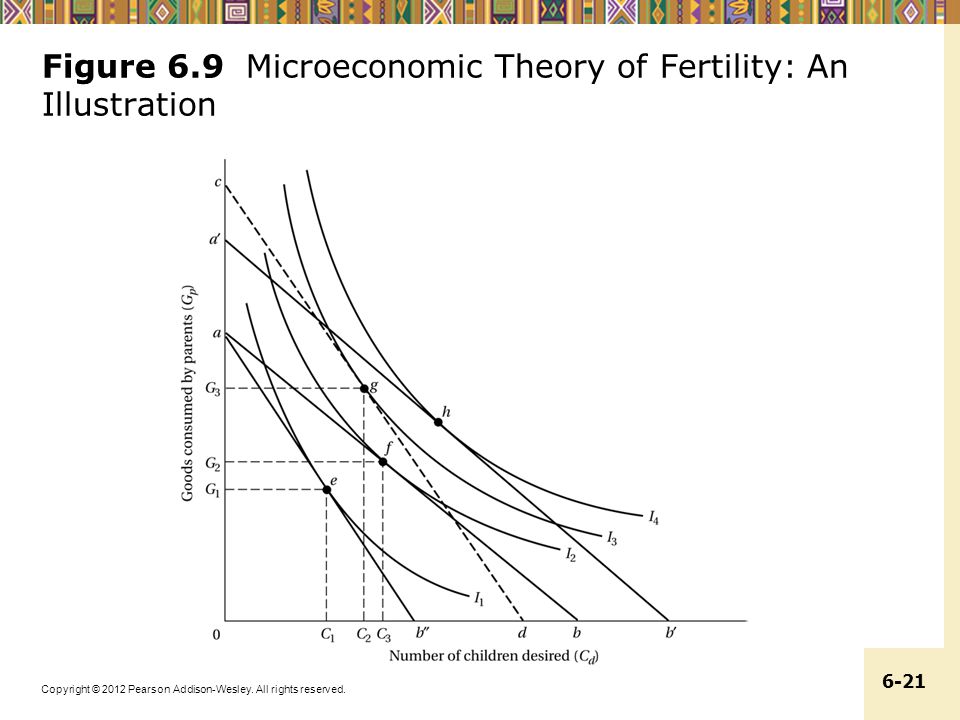Microeconomic Theory Of Fertility Pdf Files
Download Microeconomic Theory Of Fertility Pdf. First of which is the contingent growth in the labor supply, and the even more contingent growth in gross domestic product. Labor supply growth is merely a means to economic growth, which is merely a means to rising standards of living. At each point there are contingencies involved. The microeconomic household theory of fertility The demand for children in from ACCOUNTING 402 at De La. Most Popular Documents for ACCOUNTING.
The carrying capacity of the earth is continually increasing, due to technology enhancements and advances in gene selection, such as the Green Revolution of the 1970s. The earth can carry much more people than was thought by Thomas Malthus, who assumed that populations grow at a rapid rate unless checked by limited supplies of food and other subsistence goods. The notion that subsistence goods increase arithmetically and population increases exponentially needs to say something about the increase in the carrying capacity which in turn increases the human populations which are able to scavenge the earth. Jan van der Veen's (drawing on other work) shows that population is now increasing at a decreasing rate since the 1985—1990 period. Moreover, there is a 15% probability that in a hundred years population will be less than that of today. Population growth has some obvious positive impacts on the economy. First of which is the contingent growth in the labor supply, and the even more contingent growth in gross domestic product.
Disclaimer We are not affiliate with cell phone companies like Nokia,Samsung,Sony Ericsson,Lg,Motorolo and some other etc Manufacturers / Vendors.All trademarks are the property of the respective trademark owners.we just provide diagrams for study and repairing purpose.these images are uploaded by website visitors.so we will not be responsible for any loss or damage, including personal injury.for more detail read Terms & Conditions and Privacy & Policies at bottom. Restore Hard reset will set your phone in origional factorry settings. For more detail and new tips and tricks about cellphone service problem keep visiting this page we will update cellphone service diagrams timely with new cellphone diagrams.some related post are also given bellow you can read them also for more information about cellphone. Nokia x2 02 karta pamyati ne otformatirovana 1. To get new repairing cellphone diagrams and applications with email click.
Labor supply growth is merely a means to economic growth, which is merely a means to rising standards of living. At each point there are contingencies involved, and we should be doubtful about any “necessary” connections implied in the pro-natalist argument. There is also the argument that each person added to the population has the potential for genius, and that increases in population increases the number of baby-geniuses in the world. On the other hand there are profound negative macroeconomic consequences of the microeconomic decisions made in the sphere of the family. The economics of the family can for example give rise to environmental degradation problems, strains on public services such as health and education, decreasing savings rates, and various other externalities on, say, negative externalities on other members of the totem or joint family, negative externalities on members of the community, and wage depression due to an overabundance of labor. And to state the obvious, children necessarily consume resources, drawing on the family’s income and societies’ natural capital.

These points make clear that the family’s private cost and benefits do not match up with social and natural costs and benefits. Diagrammatically, this is captured by the fact that the social cost is graphed steeper than the private costs.
It may also be possible that there is no difference in costs, yet social and private benefits diverge greatly. The negative impacts of population growth are much more sufficient for negative outcomes than the positive impacts are sufficient for positive outcomes.
The microeconomic theory of fertility is useful here because it asks the question why a family would decide to rear children in the first place. The economics of the family asks what kinds of incentives are involved. After all, the decisions being made are often not based on society’s natural capital, or local wage levels.
Family decisions are often made at the microeconomic rather than the macroecnomic level. These are salient microeconomic behaviors based on things like private prices, tastes and preferences, incomes, and especially the expected marginal benefit from having children and so on. To frame this discussion, children in regions of high-income (correlated with low fertility) often are considered “consumption goods”, whereas in regions with low-income (correlated with high fertility) they are often considered “investment goods”. The difference will be clear in a moment. We can also ask lots of other interesting economic questions about fertility. Such as whether children are substitute goods or complimentary goods for any other good or activity.